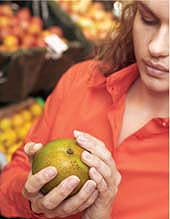All Issues
Letters: January-March 2006
Publication Information
California Agriculture 60(1):4-4.
Published January 01, 2006
PDF | Citation | Permissions
Full text
Lessons of U.S. BSE policy
Regarding the October-December 2005 issue (“Testing times: The impact of mad cow disease”): A number of lessons can be drawn from the BSE story. First, purse strings and market concerns rather than public health guide public policy on BSE. Second, the dangers inherent in industrial agriculture are not the same risks inherent in organic agriculture. And finally, the farm lobby is a threat to food security.
The bigger picture of U.S. agriculture also surfaces in the BSE lessons. Industrial agriculture reduces the farmer and rancher to blue-collar workers whose only ethic is the dollar. Sustainable and organic farmers and ranchers are professionals, professing a code of conduct that includes both food quality and social justice. Had the organic industry been as large as industrial agriculture, the odds are good that the United States would have had better BSE surveillance, earlier cases and more statistics than now.
WHAT DO YOU THINK?
The editorial staff of California Agriculture welcomes your letters, comments and suggestions. Please write to us at calag@ucop.edu or 1111 Franklin St., 6th floor, Oakland, CA 94607. Include your full name and address. Letters may be edited for space and clarity.
Bud Hoekstra
San Andreas
Editor's note: Mr. Hoekstra provided a detailed analysis as the basis for these opinions, which we did not have the space to print.
Influence of hort biotech issue
This letter is to commend California Agriculture on publishing the special issue, “Fruits of Biotechnology Struggle to Emerge” (April-June 2004). This publication has been widely distributed and highlighted at several important agricultural events in California, the United States and internationally, and the ideas have been incorporated in a range of other publications. Some specific outcomes from the special issue include:
-
The Seed Biotechnology Center and Agricultural Issues Center at UC Davis have distributed more than 1,600 hard copies at public and private meetings and have directed many inquiries to the electronic version available from the California Agriculture Web site.
-
The material in this issue formed the basis of public comments to the U.S. Department of Agriculture in 2004 on the regulation of biotech crops in the United States, which were subsequently expanded and published in Nature Biotechnology in April 2005 (23:439–44).
-
The material was cited extensively in articles in Chronica Horticulturae (2004, 44:4–8) and the Journal of Crop Improvement (in press), and in a book chapter to be published in early 2006 (R. Just, J. Alston and D. Zilberman, eds., Economics of Regulation of Agricultural Biotechnologies, Kluwer).
-
The special issue supported the rationale for a “specialty crops regulatory initiative” to provide assistance with obtaining approval for commercial releases, particularly for public developers of biotech specialty crops in the United States. Meetings in Washington, D.C., in 2004 and 2005 have further developed this concept into a detailed plan to be proposed at the national level.
-
At the recent meeting on the Cartegena Protocol for Biosafety, the agreement that will regulate trade in biotech crops worldwide, the special issue was used by several parties as a reference.
Correction: James A. Downer, UC Cooperative Extension farm advisor in Ventura County, was inadvertently omitted from the author list of “Imported parasitic wasp helps control red gum lerp psyllid” (Cal Ag 59:229–34).
As guest editors of this issue, it was a pleasure for us to work with the California Agriculture staff, whose input enhanced the written clarity and visual presentation of the material. We believe that California Agriculture can be justifiably proud of producing this high-quality and relevant publication.
Kent J. Bradford
Professor and Director Seed Biotechnology Center, UC Davis
Julian M. Alston
Professor, Agricultural & Resource Economics, UC Davis Associate Director, UC Agricultural Issues Center
Panoramic California
I want to compliment you on the April-June 2005 issue of California Agriculture. I have been a subscriber for almost 40 years and have found much of value through the decades. During our creation of the California Water Atlas in the 1970s, I used your staff and many contributors to ferret out important information.
After more than 30 years on the geography faculty at CSU Northridge, I have retired and immersed myself even more deeply in the geography of California and the West. One of my amusements is the creation of photorealistic aerial panoramas made from mathematical simulations. The data from which these unusual, high-altitude images are constructed come from NASA numerical satellite operations (Landsat 7 and SRTM).
I think that such illustrations might help your authors and readers to better understand the essential spatial qualities of California. All my work is copyrighted, but I give away its limited use to schoolteachers and students for nonprofit, instructional purposes.
William Bowen
California Geographical Survey, Northridge ( http://geogdata.csun.edu )
Editor's note: We are grateful to Dr. Bowen for his contribution of the wonderful image on page 7.





